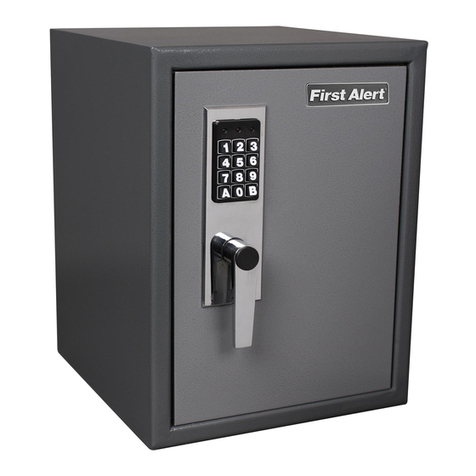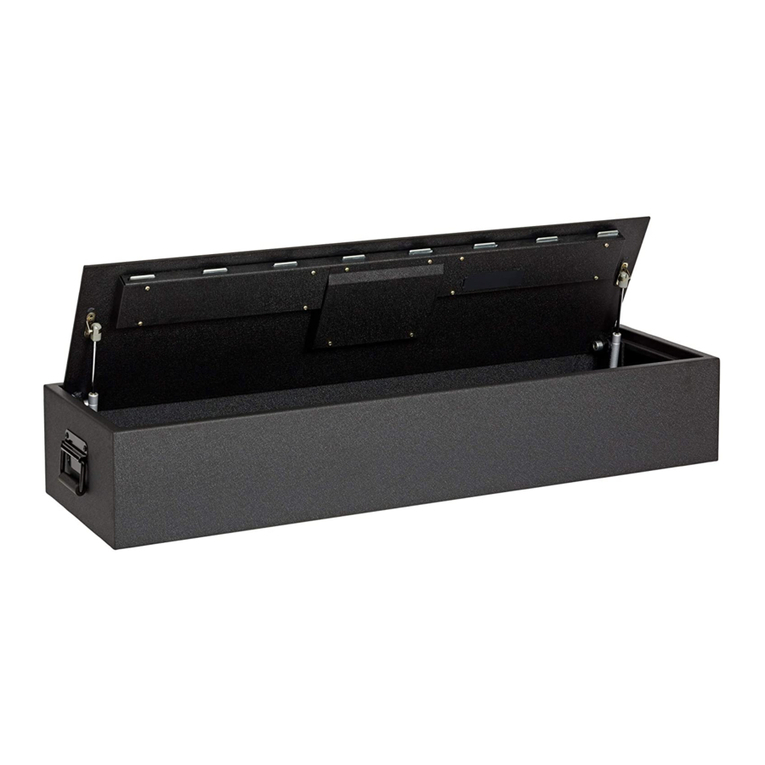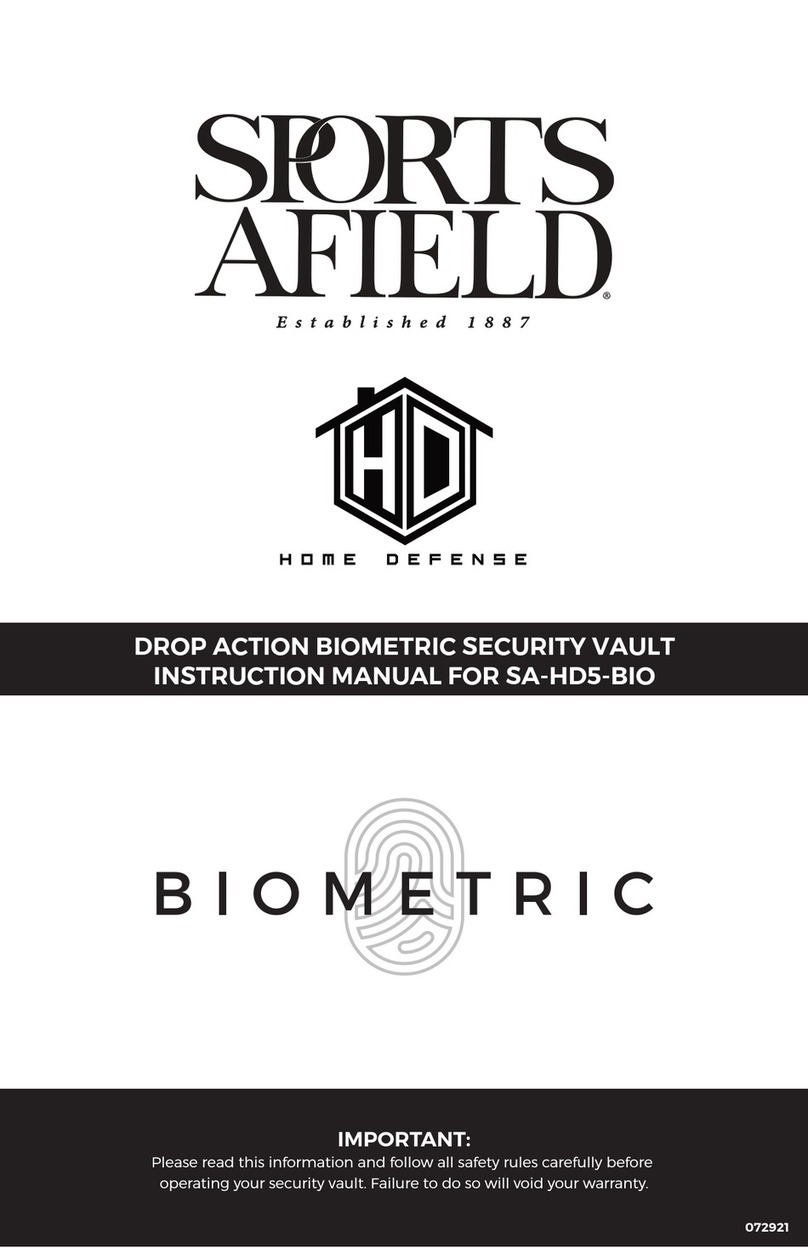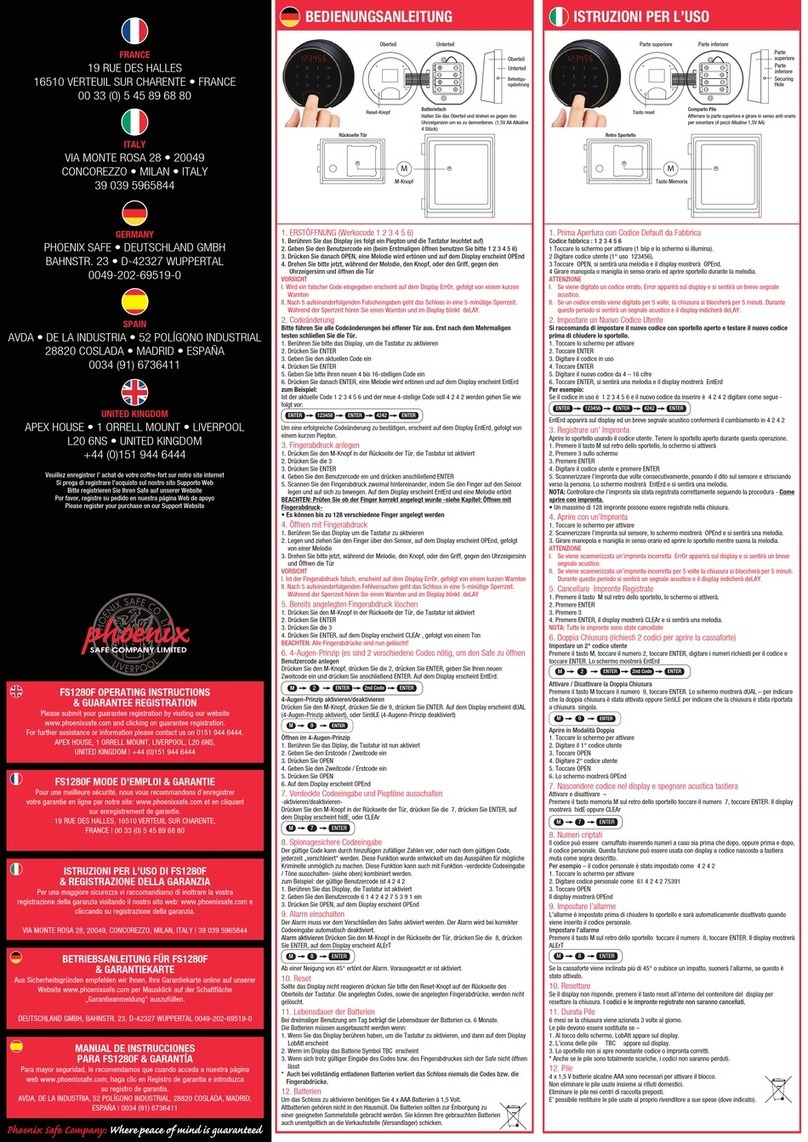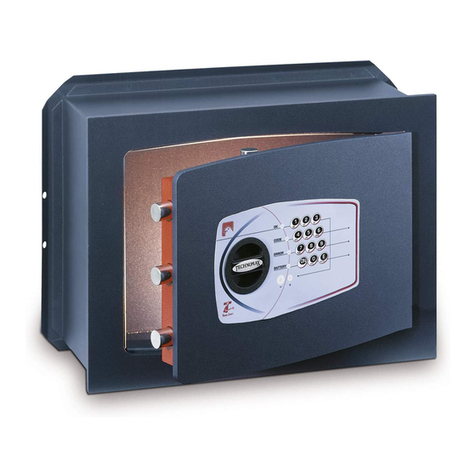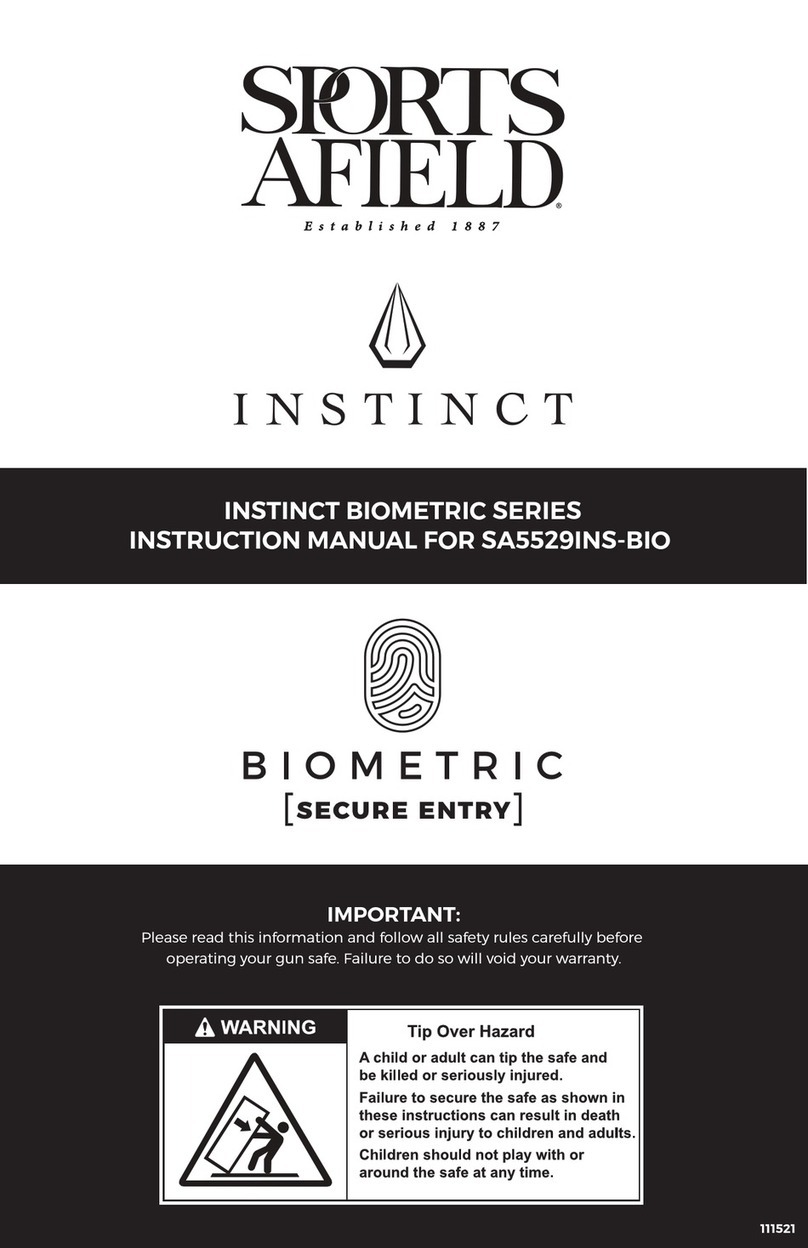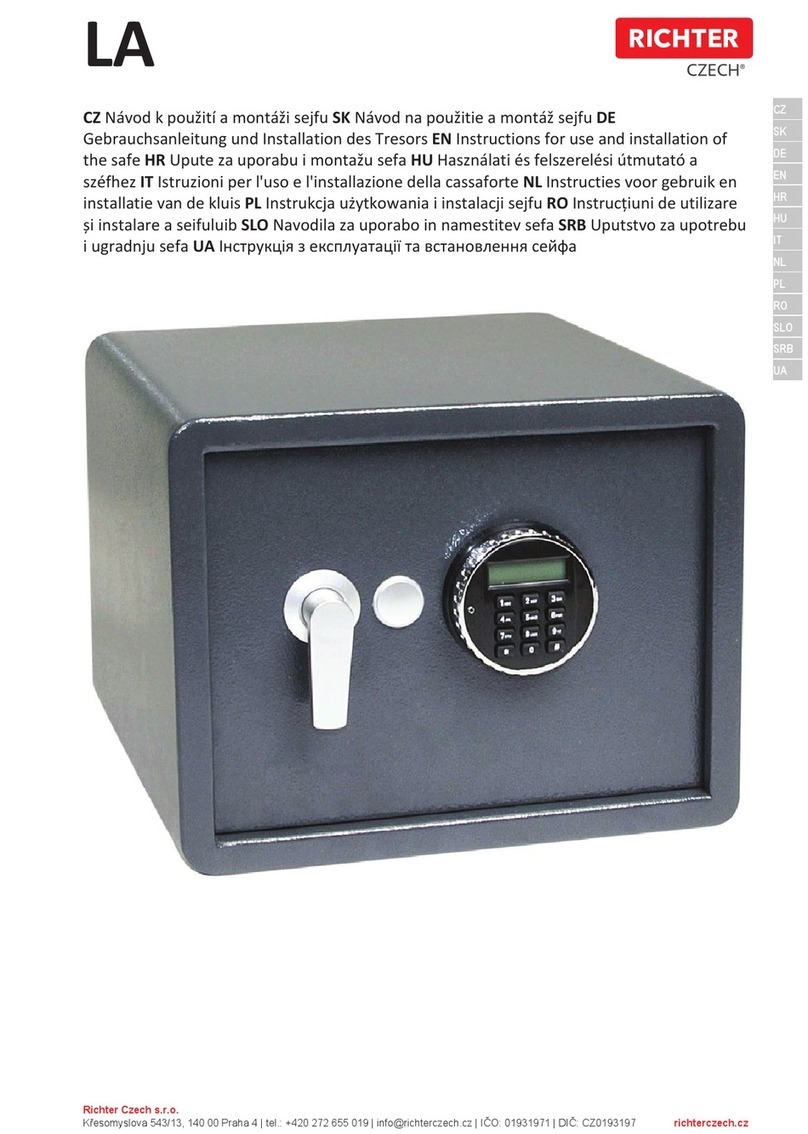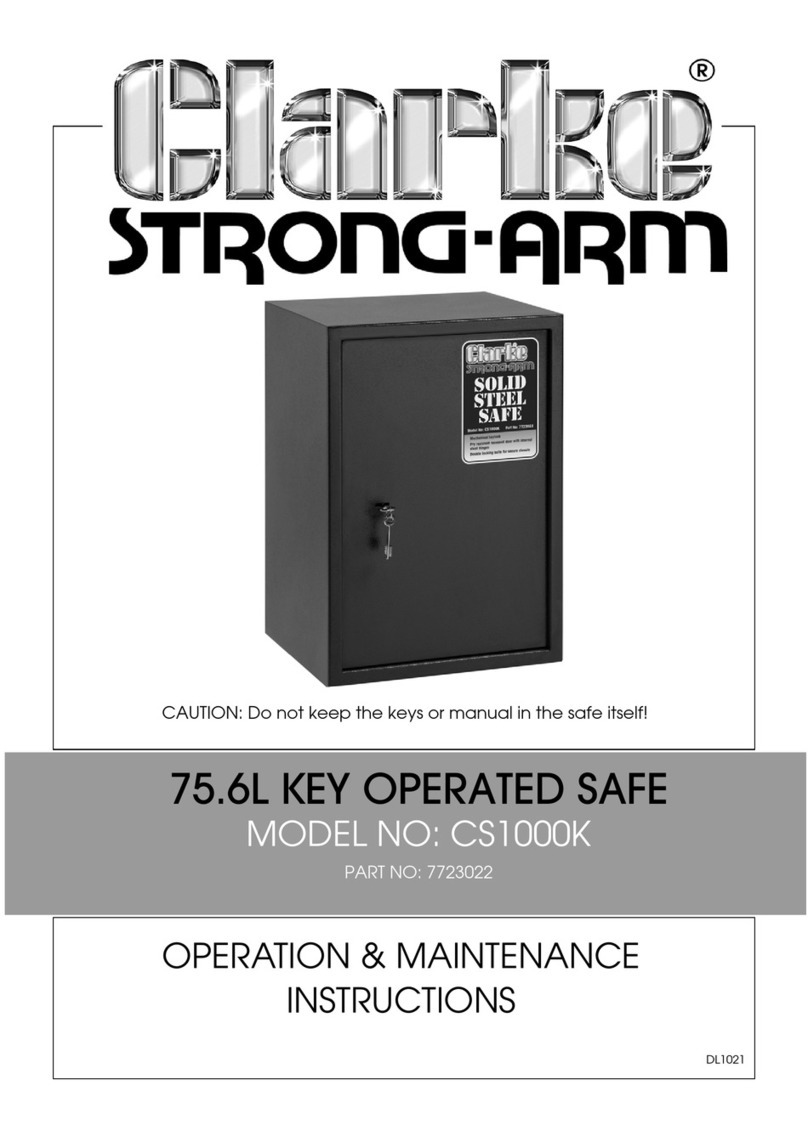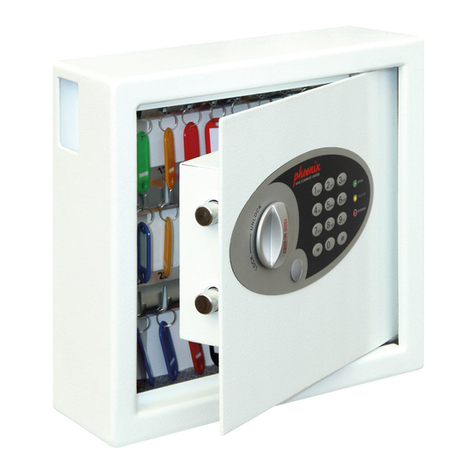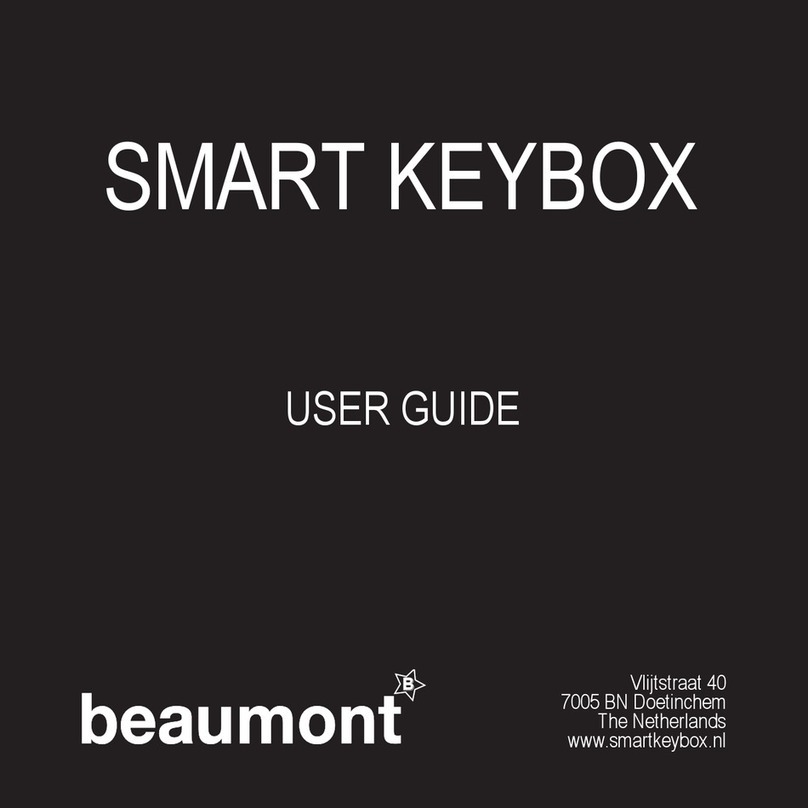
9 10
User Guide
Environmental requirements
Media Requirements:
The spectral head is capable of handling multiple denominations
simultaneously, the media that can be accepted includes but is not limited to:
• Paper notes
• Polymer notes
• Windowed notes
The minimum and maximum dimensions for media are:
Network Requirements:
LiveSafe requires a LAN network to work.
• Local NTP Server or Internet access
• Preconfigured fixed IP address or a DHCP Server working on LAN
Fixings:
The LiveSafe is secured with 2 x metal plate brackets
• 202mm angled width x 224mm height
• With 2 x M6x50 and 2 M6x10 screws for each plate.
Environment Minimum Maximum
Temperature +3° +50°
Humidity 5% 95% non-condensing
Minimum Maximum
Lenght 110mm 170mm
Width 56mm 82mm
Detection Technology and Features:
The spectral head is a highly secure and technologically advanced banknote
validator. State of the art spectral sensors offer complete note image capture
by scanning over 4.8 million data points to authenticate the validity of notes.
The unit boasts 99%+ first time acceptance of new and street grade notes
with a note-to-note processing time of 2 seconds.
The unit contains several security features including optical and mechanical
anti-strimming technology that delivers outstanding fraud protection and
cutting-edge note centring mechanism.
Hyperspectral all ranges from IR to UV, no magnetic detection.
• 100% note image capture - 4.8 million data points
• 99%+ first time acceptance of new and street grade notes
• Stained note detection
• 2 second note to note processing
Unit Operation:
The unit is operated, enabled and opened with iButton security technology.
Each iButton has its own unique serial number identification, the device
is programmed by the guaranteed unique 64-bit registration number that
allows for absolute traceability.
The thick stainless steel casing of the iButton ensures resistance against dirt,
dust, moisture, shock and other environmental hazards.
The button shape helps to establish a proper alignment with the probe and
ensures reliable communication with a speed of 16.3kbps.
